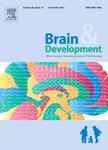版权所有:内蒙古大学图书馆 技术提供:维普资讯• 智图
内蒙古自治区呼和浩特市赛罕区大学西街235号 邮编: 010021

作者机构:Hunan Univ Technol Coll Elect & Informat Engn Zhuzhou 410082 Peoples R China Tech Univ Denmark Ctr Elect & Energy Dept Elect Engn DK-2800 Lyngby Denmark Hunan Univ Coll Elect & Informat Engn Changsha 410082 Peoples R China
出 版 物:《IEEE TRANSACTIONS ON POWER ELECTRONICS》 (动力电子学汇刊)
年 卷 期:2021年第36卷第2期
页 面:1970-1983页
核心收录:
基 金:National Key Research and Development Program of China [2018YFB0606000] Natural Science Foundation of China [U1934219] Hunan Provincial Innovation Key Foundation for Postgraduate [CX20190261] China Scholarship Council
主 题:Robustness Torque Stator windings Predictive control Predictive models Windings N-segment three-phase permanent magnet synchronous motor (PMSM) parameters mismatch predictive torque control (PTC) unknown torque disturbance observer
摘 要:In this article, a novel predictive torque and stator flux control (PTSF) method is proposed for N-segment three-phase permanent magnet synchronous motor (N*3-phase PMSM), which can effectively eliminate the influence of parameter mismatch on stator flux and torque. The proposed PTSF method has two loops, stator flux loop and torque loop, both implemented with robust predictive control algorithm. First, the stator flux predictive controller with parameter robustness is designed, and the sensitivity of its parameters is analyzed. In the dq stator flux space, the robust stator flux predictive control with one-step delay compensation is then proposed, which can effectively enhance robustness against parameters mismatch. Moreover, the robust torque predictive control based on unknown torque disturbance observer is developed, which can effectively strengthen the robustness against the load torque disturbance and parameter mismatch. Finally, the validity and feasibility of the proposed PTSF method are verified by simulation and experiment. Excellent simulation and experimental results were achieved with respect to the stator flux tracking error, torque /flux ripple reduction, and stator current distortion over conventional predictive torque control.